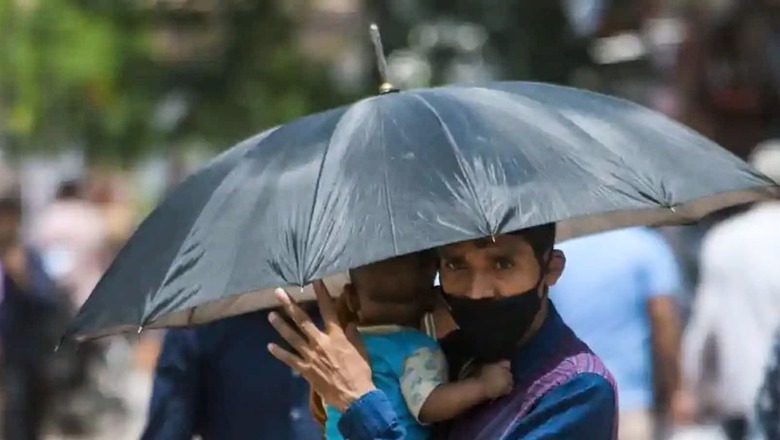
views
Heatwave returned to parts of the capital despite the weather department predicting a cloudy sky and light rain on Wednesday. The Safdarjung Observatory, the city's base station, recorded a maximum temperature of 42.2 degrees Celsius against 39.6 degrees Celsius on Tuesday. The mercury jumped to 45.1 degrees Celsius at Mungeshpur in northwest Delhi, making it the hottest place in the capital. Altogether, four out of the 11 weather stations in Delhi recorded a heatwave — maximum temperatures at these places settled at least 4.5 degrees notches above normal.
Weather experts said thunderstorm activity remained confined to parts of Uttar Pradesh such as Mathura, Hathras, and Aligarh. A trough persisting over this region is likely to move down towards Delhi, they said. "A fresh Western Disturbance, an induced cyclonic circulation over Punjab, and moisture-laden easterly winds will provide relief from the heat from Thursday," said Mahesh Palawat, vice-president (climate change and meteorology), Skymet Weather. He said pre-monsoon activity in tropical and sub-tropical regions is a sudden development due to high temperatures and humidity and a micro prediction of such development is difficult.
Such events are not associated with a pre-defined or prominent weather system such as a low-pressure area or a depression that could help weather forecasters predict the area of impact with good probability, he said. The Met office had issued a yellow alert, warning of thundershowers and gusty winds towards afternoon or evening in the capital.
On Tuesday, a cloud cover had cocooned Delhi, causing the maximum temperature at the Safdarjung Observatory to drop below 40 degrees Celsius for the first time this month. The IMD said consecutive western disturbances and lower-level easterlies predicted in the coming days are likely to keep the heat at bay.
It has issued a yellow alert, warning of thundershowers or light rain over the next five days. The mercury is predicted to drop to 34 degrees Celsius by Monday. The weather will become clear after June 21 and dry westerly winds will commence but a steep rise in temperature is not predicted.
The monsoon is expected to arrive in Delhi around the usual date — June 27 — or a day or two in advance. Last year, the IMD had forecast that the monsoon would arrive in Delhi nearly two weeks before its usual date. However, it reached the capital only on July 13, making it the most delayed in 19 years.
The capital has recorded a maximum temperature of 42 degrees Celsius and above on 27 days so far this summer season, the highest number of such days since 2012, according to IMD data. In 2012, the city recorded a maximum temperature of 42 degrees Celsius or above for 30 days. The number of such days was 35 in 2010, the highest in the 1951-2022 period, the data showed.
Read all the Latest News , Breaking News , watch Top Videos and Live TV here.




















Comments
0 comment